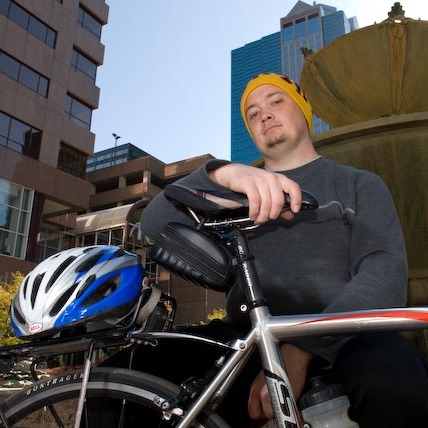Elizabeth from BikeCommuters.com posted this to Facebook today. Hal is a wrench at a popular Manhattan bike shop. He takes to the mean steets and criticizes bad bicycle locking jobs.
In short, he's looking for 3 things:
- Use a really sturdy chain and lock (not a cable) to secure your frame to a large, immovable object.
- Make sure both wheels are secured to the frame or to the immovable object with more than just the axle nuts or QR skewers.
- Make sure the seat is properly secured (again, with something more than the seatpost collar)
Hal's comment on quiet streets generally being safer is generally spot-on, but you could be asking for trouble if your lock-up spot is too secluded and you frequently lock up there for long periods of time. He also discusses the fact that locks only buy you time. As a security guy, I would say that it's more complicated than that, but not by much.
- If someone really wants YOUR bike (because it's the most expensive one they came across, because they hate you, or because it's the only bike around), then locks only buy you time.
- If someone just wants something easy to steal (including individual bike wheels, seats, etc) and yours is locked up better than the others in the area, thieves will usually choose the easier target.
I'd still like to know where Hybridzilla ended up. I checked all the pawn shops, all the online places and the local newspaper want ads. I like to think it found its way to someone that appreciates and rides it much as I did. It was purpose-built for getting around reliably.
Random Tunage:
Derek Howell - Frozen
Cascade - Escape



2 comments:
Thanks for the info. I always figured that my Craigslist special was pretty safe, no one would want it. Then I read about Hybridzilla. Too bad. I wonder if biking thefts are reduced in the winter?
As goofy as Hal is, he is spot on when it comes to locking your bike.
Post a Comment